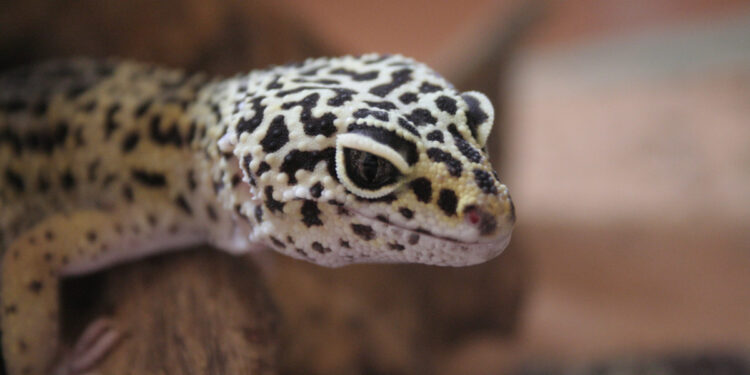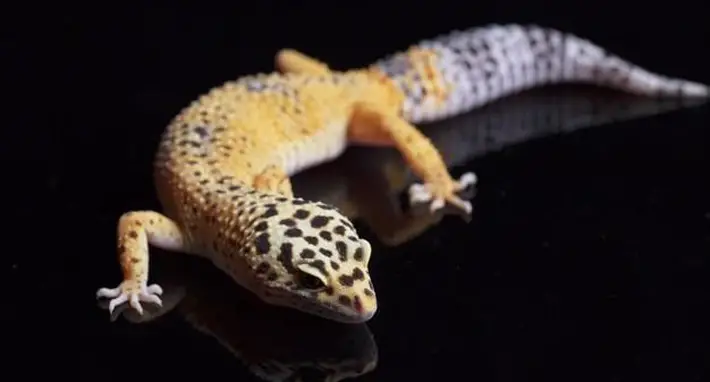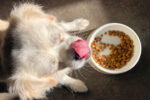How To Take Care Of A Leopard Gecko

These reptiles come in a variety of colours and patterns and are generally easy to take care of. Perfect for those who are beginners at pet-raising.
Leopard geckos (Eublepharis Macularius) are nocturnal reptiles that dwell in the ground and are commonly found in dry grasslands and desert regions of Afghanistan, India, Pakistan, Iran, and Nepal. They love the dry and warm weather and can live up to 15 years in the wild and 20 years or more in captivity.
Leopard geckos come in various colours but the most common are yellow, white, and black spotted dots. These are readily available and affordable. The ones with different colours can be expensive as they are rare. Typically, these reptiles are 8 to 10 inches in size including their tail.
Why A Leopard Gecko?
Leopard Geckos are generally easy to tame and are docile. They require minimal care and are usually forgiving if their environment isn’t perfect. Compared to other lizards, they do not have sticky toe pads, so they cannot climb walls like others do, however, unlike other geckos they have eyelids.
These reptiles are slow-moving and are not prone to biting. When hungry, they’ll call out in chirps and squeaks to feed them. They feed on roaches, and you’ll get the best ones at https://www.topflightdubia.com/
If you decide to purchase a leopard gecko, you can gently touch it when you bring it home but don’t overdo it. They can become stressed with too much social contact. Also, these geckos are tail rattlers much like the rattlesnake. They’ll rattle their tail when they want to eat or mate. Besides, like other lizards, these geckos will also self-amputate their tail when they feel threatened.
Habitat Of A Leopard Gecko
If you’re planning on breeding leopard geckos, then keep in mind to purchase only one male gecko per habitat. A 15 to 20-gallon large tank is sufficient for 2 or 3 geckos. However, if you have an old fish tank at home, that’ll work too as long as it’s clean. Materials such as cardboard boxes, half logs, can be provided for the gecko to hide and climb and a damp box for shedding.
As for cleaning the tank, spot clean it every day and once a month takes out all the substrate, scrub and disinfect the tank to reduce the buildup of bacteria.
Lighting & Heat
As leopard geckos are nocturnal creatures, they do not require UV lighting, however, to avoid them having a metabolic bone disease, a small amount (2%-7%) of UVA and UVB lighting can be provided to keep them healthy.
You can install incandescent lighting and heat to mimic sunlight and provide 14 hours during summer and 12 hours during winter. If you’re busy or will be out the entire day and night, you can automate them by putting the lights on a timer.
The incandescent heat bulb with regular white lighting will provide a basking spot during the day. A purple or a blue heat bulb can provide supplemental heat during the night.
There are also Under tank heating pads, however, they aren’t effective in regulating a gecko’s temperature. Moreover, as these heating pads are put under the tank, if the gecko burrows down, the glass of the tank can cause burn injuries. Also, avoid using rocks if you’re using these heating pads.
As reptiles are cold-blooded creatures, they can regulate their body temperature. To help them adjust the temperature from 88 degrees Fahrenheit (31 degrees Celsius) to about 75 degrees Fahrenheit (24 degrees Celsius) during the daytime. At night, it can be adjusted between 70 – 75 degrees Fahrenheit (21 to 24 degrees Celsius). Make sure not to place the tank near a window or a door.
Humidity
Leopard geckos are desert dwellers, so they prefer their environment to be dry with a regular humidity level. Humidity levels between 30% – 40% are sufficient for them. With a low temperature, they will have trouble shedding. A regular screen top with a heat source can keep the cage or tank dry. You can get a hygrometer or a humidity gauge for the cage or tank.
Substrate
It is better to provide a sand substrate for your gecko to imitate their natural habitat, however, young geckos tend to ingest the sand, resulting in intestinal blockage. To avoid this, you can provide paper or carpet as a substrate.
Meals & Supplements
Leopard geckos love munching on insects. They are insectivores, and they feed on a variety of crickets, roaches, waxworms, and occasionally mealworms. Young geckos can be fed several times a day where the insects need to be gut-loaded before feeding, but adult geckos can skip several days between feedings. Moreover, when you feed your lizard, coat the insects with calcium/vitamin D3 supplements powder to meet their daily requirements. You can do this by putting the insects and powder together in a ziplock bag and shaking it. Adult geckos can also get the supplements every other day. When you have a busy schedule keeping a leopard gecko as a pet is a good idea because it is easy to maintain. Also, you can keep your house squeaky clean without any pet hair around.
As for water, provide it in a shallow dish. This will help humidify the tank, and they’ll drink from the bowl on their own.
Common Health Problems
The most severe health issue that affects a leopard gecko is a metabolic bone disease. Just like humans, this disease can occur if sufficient calcium and vitamin D are not being met. Metabolic bone disease can cause painful spine and limb deformities and the symptoms involve poor appetite and tremors.
Another health problem is bubbling armpits. Those bubbles contain fat, calcium, vitamins, protein, or other minerals. This usually happens when the gecko is overweight, but this goes away on its own once the lizard returns to a healthy weight.
If your gecko has watery stools and its tail shrinking, it might have gastroenteritis, which comes from a bacterial infection. This infection can be treated if caught early, otherwise, it could become potentially fatal.
Dysecdysis is another condition that occurs if the lizard is malnourished or lives in a habitat with insufficient moisture. They can be prone to dry skin which would make it difficult for them to shed and may also affect their vision.
Leopard geckos are also susceptible to a variety of respiratory infections, just like humans. If you hear wheezing or see bubbles of mucus around its nose and mouth, it is a sign that your gecko may have a respiratory infection.
Leopard geckos can live up to 20 years or more in captivity with proper care. They don’t require much if they have the right amount of lighting and warmth imitating the desert environment. So do your research before purchasing one.
Moreover, sick or not, take your pet to the local vet at least once a month for a regular checkup. These reptiles are good listeners so whenever you feel down, you know there’s someone who will hear you out without giving opinions and judgments. Only avoid excessive social contact with the gecko as too much petting may stress them out.










